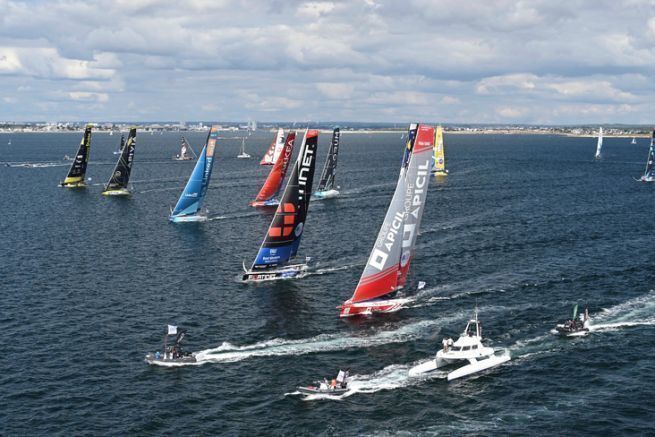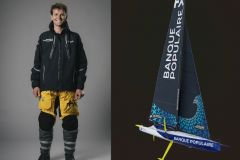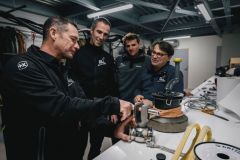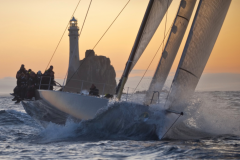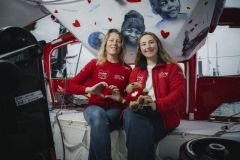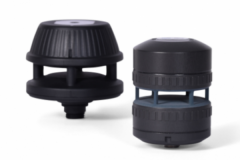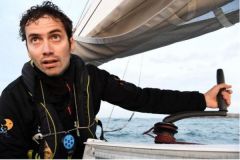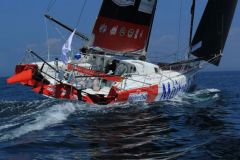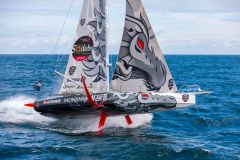How do you explain the enthusiasm for the IMOCA Euro class?
There are many explanations. At the moment, ocean racing in the broad sense of the word attracts. Many classes are experiencing the same thing as in Class40 or Mini. Ocean racing is exciting, appealing and attractive.
If we focus on the IMOCA class, the 2020/2021 Vendée Globe has been an incredible success. A lot of the ingredients have come together. The timing was right, even if the race was difficult to organize. In the middle of a confinement, it allowed many people to escape and converted many fans. The sporting scenarios were incredible, the boats reliable with 27 out of 33 skippers crossing the finish line.
Eventually, the sponsors re-committed quite quickly, or even upgraded their investments. Beyond the story, most of the players analyzed that it was very profitable, with a really good return on investment ratio.
The class is working hard to develop new programs. The stage is set and we are holding on to a momentum. We are in a very positive spiral with good elements at the right time. There is a lot of talent on the part of our skippers.
What are the latest developments endorsed by the class and the futurists?
The important point is a 4-year program with 15 great races, including the Vendée Globe and The Ocean Race. We are ensuring continuity in terms of measurement, which remains similar to that of the 2021 Vendée Globe. We are working on two points:
- To improve the ROI (Return on Investment) for the sponsors, and to give them the best possible media coverage by enhancing the value of the partners' investments.
- Solidly develop the sustainable development part. We invest 15% of the class budget in it. We have a better grasp of the subject since our first concrete and legitimate actions 4 years ago. The areas are varied: life of the teams, construction of new boats, LCA (Life Cycle Assessment), installation of sensors for measurements in partnership with UNESCO - 14 boats are under construction with 14 different LCAs.
We have to put the emphasis in the right direction. There is a rule that pushes to use materials a little better: flax fiber, bamboo, bio-resin. If parts are made with alternative materials, they can be removed from the gauge weight up to 100 kg. Schools and young people are working on these topics, to bring these new materials into the construction of boats. You can't change an industry in 3 minutes, contrary to what some people say.
We are also working with sailboats on the definition of the Green Sail which presents a better recyclability with alternative materials or a lower consumption of water and carbon for construction. The boats will have to have a "Green Sail" among the eight authorized.
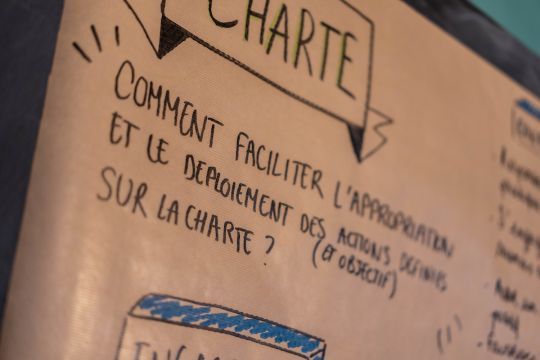
How to explain the adhesion of new sponsors and the flight of projects until now "modest" as Benjamin Dutreux with Guyot Environnement or Alan Roura with Hubloteuros?
There is an emulation and a dynamic around the system for people who are interested in it. When we invest in ocean racing, we look at projects that have potential because they are often long-term partnerships. Benjamin and Alan are young and have good results. Their projects have already reached maturity, but had not had the opportunity to explode. The idea of a sponsor is to grow with a skipper. That's often how it happens. There are projects with great potential.
Today, what is the level of the IMOCA Euro class? Is it higher than avanteuros?
It has always been very high. In 2008, the cast for the start of the Vendée Globe was crazy with Loïck Peyron, Roland Jourdain, Jean Le Cam and Michel Desjoyeaux. They are very good sailors. These are the boats that have evolved.
The new generation of skippers is a bit different from their elders in the sense that the budgets are bigger and the teams are bigger. So they have more opportunity to develop the purely sporting part of their projects. The sailor of 2024 is more surrounded than in 2008. He is more athletic than before and less eclectic. But it is difficult to say that they are better than the sailors of before.
It is certain that the class has increased in quality. Out of 40 boats, 15 or 20 can win the race. Previously, when we had 30 boats, about ten were capable of winning. Things are changing, but it's mainly the teams that are becoming more structured and the reliability of the boats that is evolving.
When you look at the curves, the boats are more reliable, the technical teams are better equipped. The boats are more expensive and the quality process is another world compared to 20 years ago. We have gained a lot. And as the boats are more reliable, the skippers sail more, train more and are therefore "stronger".
The budget increase has benefited the reliability and quality of the fleet.
Is it important for the class to keep this mix of dinghies and foilerseuros?
The strength of the IMOCA class is the diversity of the skippers. Some projects are designed to win, but in reality the lifeblood of the class is the smaller projects. This creates a circular economy. Projects are sold to smaller skippers. It's normal to start at the bottom. You can't start and manage a team of 15 people from the beginning. Then, skippers evolve towards bigger projects.
These different projects are not in opposition to each other, they complement each other. We can neither lose the small projects that are the heart of the class nor the big ones that bring media coverage. They are closely linked. You have to be able to attract sponsors who bring 500euros000 euros per year as well as 30euros000 euros per year. You have to find your place and therefore find your boat.
In the end, a boat with daggerboards or a boat with foils depends on the budget you put into it. It is actually very important.
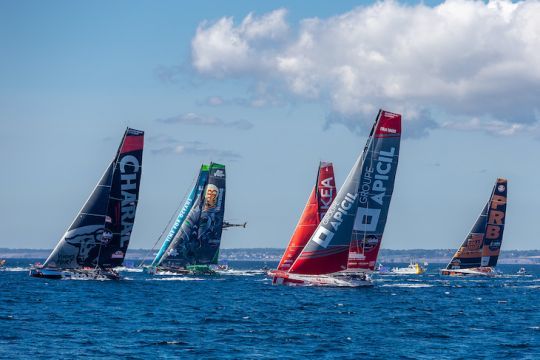
So it's still important to buy old generation IMOCA boats, or even to build boats without foils like the project of Eric Bellion and Jean Le Cameuros?
It's great! The IMOCA class is a development and technology class. We have to keep the rules. We have to be large enough with some of the teams that play in the "match" category, but remain open so as not to advocate a single thought. There are 14 boats under construction, with 6 or 7 different designers, including 3 new ones. How do you know which one is the best? That's what makes this competition so interesting. There are also fans who are interested in this technological aspect. It is absolutely great to have different concepts. Charal or L'Occitane are completely different concepts, but which one is the best?
Jean Le Cam has a lot of experience. It is certain that he will bring innovations to his concept. There is no one way of thinking and it is the diversity of projects that makes the class successful.
To the debate about adventure on dinghies or performance on foilers in the Vendée Globe, you answer "yes"?
In the last Vendée Globe, Jérémie Beyou experienced an adventure. To oppose sport and adventure is reductive. The people who perform in the top 10 euros generally also live an incredible adventure: Damien Seguin, Benjamin Dutreux, Jean Le Cameuros
The Vendée Globe is an adventure in itself. There is no opposition. If we talk about foils and non-foils, all those who have strong opinions about foilers are the ones who don't have any. But they are less virulent and do not impose. You have to accept small and big projects without opposing them.
The daggerboard boats we saw in the last Vendée Globe all have foils now. You shouldn't look too closely at your neighbor's boat. All the options are defensible. You have to keep the balance between them all.
Especially since the Vendée Globe is an undecided race with such a long course. It is not always the fastest boat that wins.
What is this allowance for old boats for the Vendée Globe 2024euros?
In order to have an IMOCA rating certificate to race in the next Vendée Globe, the boat must have been built after 1 January 2010 er january 2005. This means that boats built for the 2008 Vendée Globe are eligible, but not those built for the 2000 or 2004 Vendée Globe.
The idea is also not to have too big a gap in performance. Especially for the race directors who have to manage groups. It's more difficult to keep an eye on the fleet when the first are in one ocean and the last in another.
It's not something we're happy to do. There are many disadvantages to this kind of rule and we will probably not follow this rhythm. We're not going to shift one Vendée Globe every four years to determine the age of the boats. That's not the way it works.

Why is the Route du Rhum an important race for the IMOCA Euro class?
The Route du Rhum is a great French classic in the imagination of the French. It is a great race. For a very long time, it was the biggest race, even if the Vendée Globe has been ahead of it since the 2000s.
In terms of ocean racing, this is the second biggest event. The welcome is always nice in Saint-Malo as in the West Indies. The course is great, on the trade winds route. It's an incredible story and from a sporting point of view it's very interesting for the sailors.
Are you satisfied with the number of places allocated to the IMOCAeuros class?
We are working with the race direction to see what the state of the fleet is and we are trying to find the best balance. It's a bit tricky.
In the IMOCA class, we only have professional sailors whose job it is. But the problem with the Route du Rhum is that it welcomes enlightened amateurs who dream of participating in this race. This is what makes it so successful and what creates attachment. But it also limits the number of places in each class.
However, in our class it is delicate that some skippers cannot do a major race even though they have sponsors behind them. We defend this at the class level. We know our racers and our problems very well.
For the moment we are happy and there are still some guest places left.
